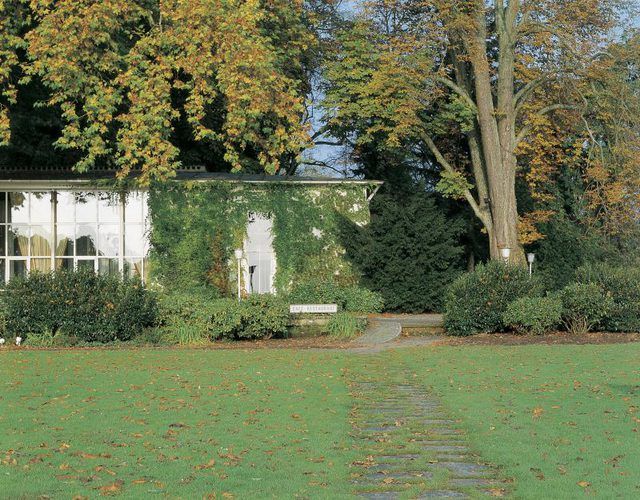Bulbs
Flower Basics
Flower Beds & Specialty Gardens
Flower Garden
Garden Furniture
Garden Gnomes
Garden Seeds
Garden Sheds
Garden Statues
Garden Tools & Supplies
Gardening Basics
Green & Organic
Groundcovers & Vines
Growing Annuals
Growing Basil
Growing Beans
Growing Berries
Growing Blueberries
Growing Cactus
Growing Corn
Growing Cotton
Growing Edibles
Growing Flowers
Growing Garlic
Growing Grapes
Growing Grass
Growing Herbs
Growing Jasmine
Growing Mint
Growing Mushrooms
Orchids
Growing Peanuts
Growing Perennials
Growing Plants
Growing Rosemary
Growing Roses
Growing Strawberries
Growing Sunflowers
Growing Thyme
Growing Tomatoes
Growing Tulips
Growing Vegetables
Herb Basics
Herb Garden
Indoor Growing
Landscaping Basics
Landscaping Patios
Landscaping Plants
Landscaping Shrubs
Landscaping Trees
Landscaping Walks & Pathways
Lawn Basics
Lawn Maintenance
Lawn Mowers
Lawn Ornaments
Lawn Planting
Lawn Tools
Outdoor Growing
Overall Landscape Planning
Pests, Weeds & Problems
Plant Basics
Rock Garden
Rose Garden
Shrubs
Soil
Specialty Gardens
Trees
Vegetable Garden
Yard Maintenance
Centipede Vs. St. Augustine Grass
Centipede Vs. St. Augustine Grass. Although both types of lawn grasses make for easy-care lawns, centipede grass (*Eremochloa ophiuroides*) and St. Augustine grass (*Stenotaphrum secundatum*) differ in appearance, texture and color. Centipede grass, suitable for U.S. Department of Agriculture plant hardiness zones 7 through 10, is light green and...

Although both types of lawn grasses make for easy-care lawns, centipede grass (Eremochloa ophiuroides) and St. Augustine grass (Stenotaphrum secundatum) differ in appearance, texture and color. Centipede grass, suitable for U.S. Department of Agriculture plant hardiness zones 7 through 10, is light green and not as coarse as St. Augustine grass. St. Augustine grass, suitable in USDA zones 8 through 10, offers dense growth and a medium to dark green color. It's less cold-tolerant than any other warm season grass.
How Does Your Lawn Grow?
Centipede grasses may be planted by spreading seed, or using sod or planting plugs. The latter two methods are used for St. Augustine, which is not available as seed. Both grasses spread by above-ground stems, called stolons. Centipede grass grows best in soils with a pH level of 5.0 to 6.0. St. Augustine grass prefers an acidity level of 6.0 to 6.5. Conduct a soil test before planting to determine whether you'll need to add amendments. Both grasses have good drought tolerance and do well in warm coastal areas in the Southeast and the most temperate regions of California.
Nearly Identical Twins
It's not easy to tell centipede grass from St. Augustine grass, but there are subtle differences that help identify which type of grass you have. Although both species have V-shaped blades, the tips of centipede grass are thinner and more pointed. Centipede grass leaves have an alternating pattern, while St. Augustine grass blades are arranged opposite one another. Seed spikes of centipede are also thinner than those of St. Augustine grass. The sheath margins of St. Augustine's 4- to 10-millimeter-wide blades are open and hairy on the edges. Centipede grass has thinner, 0.1- to 0.2-inch blade sheaths with minuscule gray tufts of hair.
Mowing and Watering
Proper mowing heights keep lawns healthy. Maintain centipede lawns to a height between 1.5 and 2 inches, and water this shallow-rooted grass only when it appears to be wilting or turning color. Give it enough water to wet the soil to 6 to 8 inches deep. St. Augustine grass may be kept to a height of 2.4 to 4 inches, and requires deep watering every three to six days to encourage strong, deep roots. Be careful not to "scalp" these grass species by mowing them too low.
Food for Thought
Centipede grass is less of a nitrogen hog than St. Augustine. Spread 1 pound of slow-release nitrogen fertilizer per 1,000 square feet of lawn once in spring and once in midsummer. St. Augustine grass likes up to 4 pounds of slow-release nitrogen fertilizer per year, spread out in equal installments from spring to late summer, while the grass is actively growing. During extended periods of drought, water the lawn more often. Check the lawn frequently for signs of insect or disease damage. A healthy lawn will choke out most weeds, eliminating the need for chemical controls.